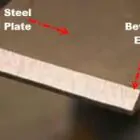Gas metal arc welding has come a long way since the invention of tandem welding (GMAW). It was made with perfect welding quality and high productivity in mind, since welding processes that meet these conditions are becoming more and more in demand.
But what does tandem welding mean? What are the benefits of the method, and where is it used? How is it different from welding with two wires?
Basics
High-performance MIG/MAG welding with two wire electrodes is used in the process. It is only used in fully automated (robot) applications, and is ideal for increasing welding speed as well as deposition rate. So how does it work?
Tandem welding involves melting two wire electrodes at the same time. These go through two contact tips that are electrically separate, which means that the potentials are different. As a result, the arcs can be controlled independently and, despite differing outputs, can be precisely coordinated.
What’s different about double-wire welding and tandem welding?
Double-wire welding is where welding with two wire electrodes got its start (developed at Fronius around 25 years ago). Here, electrodes with the same potential were used, which means that they were not electrically separated. These could be put into either a single contact tip or two separate ones.
What’s wrong with it:
When double-wire welding was invented, there were no good characteristics like pulse or PMC (groundbreaking developments). Standard welding in the dip transfer arc used back then caused more welding spatter, which made the arc unstable and cause the length of the arc to change. In the process, this led to other problems (e.g., adhesion of spatter on contact tip and gas nozzle).
Tandem Welding in Detail
Tandem welding uses two separate welding systems that are timed to work together. The different wire electrodes are fed into a single torch hosepack by separate wirefeeders. The torch has a single gas nozzle and contact tips that are not connected to each other electrically. A single weld pool is made by two arcs.
Using a Twin Controller, both wire electrodes can be synchronised in the following ways: start, phase shift of the material transfer (without phase shift, it is not possible to control droplet detachment at the same time), etc. A wire electrode can also be connected or taken apart. Welding can be done both forward and backward.
This gives them a lot of flexibility because the process is much more stable and they can weld thin sheets at speeds of 2 m/min or more. The process has a high deposition rate (22 kg/h or more) for thick sheets, which makes it possible to get a much bigger weld seam volume.
A quick look at the pros of tandem welding.
Two different contact tips, and each one can be controlled on its own.
/ Welding speeds of 2 m/min or more, depending on the position.
Very high rate of deposition (22 kg/h or more)
Useful for both thin and thick sheets
/ Lots of chances to save money
/ Simple to use
Lead (front) and trail (back) wire electrodes can have different wire feed speeds.
/ Getting both arcs to work together makes the process more stable.
Uses.
The process is very flexible and has many advantages, so it can be used in many different ways. Because of this, tandem welding is used in the Yellow Goods (construction equipment), Commercial Transport (building cars and trains), Automotive Industry (supply industry), and General Industry sectors (container construction).





